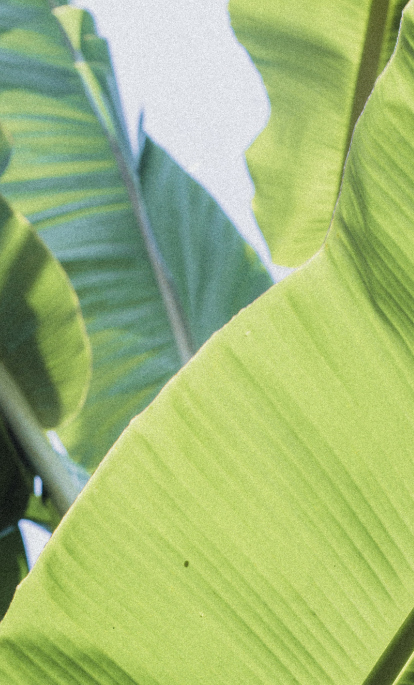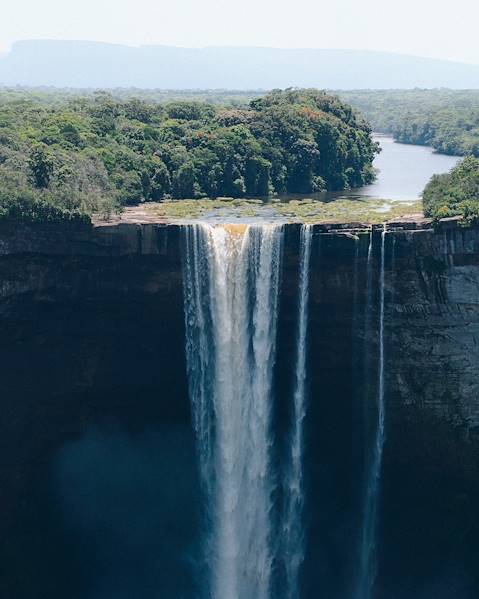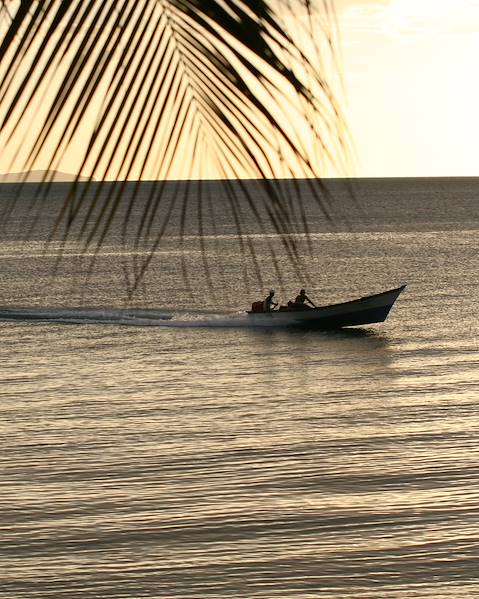Guyana is one of South America’s last hidden gems, tucked away on the continent’s North Atlantic coast, and defined by its dense rainforest and Caribbean cultural influences. Catering to both adventure seekers and culture vultures, Guyana boasts an extraordinarily diverse food scene thanks to the melting-pot of influences which have left an indelible mark on the country. A little-known fact is that Guyana is the only South American nation to have English as its official language, meaning you can travel to its most remote corners without worrying about anything getting lost in translation. Here are some things to know before travelling to Guyana…
Climate & Weather in Guyana
Positioned just above the equator, Guyana enjoys a tropical climate, with warm temperatures (ranging between 16°C and 34°C) and plentiful rainfall. There are two distinct rainy seasons during the year, from November to January, and late April to mid-August. The two dry seasons run from February to March and September to October. Different regions of the country experience varying intensities and durations of rainfall, however May to August sees abundant rainfall across the country. Nevertheless, given Guyana’s tropical climate, the country doesn’t see extremes of hot or cold, and temperatures remain pleasant even during the rainy seasons. Additionally, showers tend to occur in the afternoon and evening.
Currency in Guyana
The Guyanese dollar (GYD) is the official currency of Guyana, however US dollars can be used in Georgetown (the capital) for larger transactions, such as hotels and meals. Credit card use is growing within retail and hospitality, however the country is still largely a cash-based economy, so exchanging some money in advance is the best option to ensure you get the best rates. ATMs can be found in the larger towns and cities, however they are not widespread and it’s wise not the depend on them. Tipping is common practice in Guyana, with 10-15% the standard amount. Sometimes service charge is already added to the bill, in which case an additional tip isn’t necessary.
Food & Drink in Guyana
Influenced by both its colonial history and indigenous populations, Guyana’s cuisine borrows elements from Creole, East Indian, Portuguese and European dishes. Staples include root vegetables (such as cassava and sweet potato), seafood, fresh fruits, bake (fried dough) and green seasoning (a combination of herbs, onions, hot peppers and garlic). Some popular dishes are curry (made from goat, lamb or duck), metamgee (dumpling stew, featuring cornflour, yams, plantains, eddos root and cassava, cooked in coconut milk), pepperpot (stewed meat flavoured with cassareep, hot peppers and cinnamon) and cook-up rice (a one-pot rice dish made with peas, beans and chicken).
Given the abundance of fresh fruit available in Guyana, freshly-squeezed fruit juice is a popular drink. Mauby, a drink that is made from the bark of a local tree which is boiled, strained and sweetened, is another local favourite, while rum is the most commonly found spirit and Banks Beer is the national beer. Guyana’s tap water is known to be contaminated in some regions, so it’s safest to drink bottled water. Bringing a filtered water bottle is a good idea to avoid plastic bottle waste.
Transport in Guyana
Taxis are the most common form of transport and are available throughout Georgetown, although be sure to use registered companies and avoid unlicensed street taxis. Negotiating the rate with the driver beforehand is advised. Minibuses serve as the main public transportation system in Guyana, running in designated zones according to a regulated fare system, however timings for buses aren’t the most reliable and vehicles have a poor safety record. While car rental isn’t widespread in Guyana, but there are some companies located at the airport and this can be a good way of exploring the country’s more remote regions (be sure to get a four-wheel drive vehicle). Water taxis operate between Stabroek Stelling and Vreed-en-Hoop, and domestic airlines can take you into the interior of the country.
Language in Guyana
English is the official language of Guyana, and the country is the only South American nation with English as its official language. Guyanese Creole or Creolese (an English-based creole with African, Indian, and Amerindian syntax) is also widely spoken.
Etiquette & Travel Tips for Guyana
Guyanese people are very welcoming towards tourists and travellers, although generally have a flexible attitude towards time keeping, so bear this in mind when arranging activities. Travel delays can be common in remote areas, due to weather or wild animals blocking roads, so be patient while navigating the country. It’s worth nothing that while Guyana’s telecommunications infrastructure does reach most parts of the country, you may have less frequent access to the internet in rural areas.
Health & Safety in Guyana
Travelling to Guyana is generally trouble-free, however crime is a problem in the larger cities and precautions should be taken to protect yourself and your belongings. As in any foreign country, use common sense; don’t wander the streets after dark or head to unknown neighbourhoods without researching their safety first, and don’t flaunt any expensive possessions or jewellery. Be sure to have travel insurance for your belongings, remain attentive to your possessions in busy cities and avoid using your mobile phone in the street. Always keep your passport, air ticket and other valuable items in a safe place. Steer clear of more dangerous areas, such as Albertown, don’t resist if you are robbed and head to the nearest police station to report the crime.
Swimming in the rivers in Guyana is a wonderful nature experience, however it’s important to seek advice about where is safe to swim beforehand. Malaria remains a health risk in Guyana, especially when visiting the interior regions, so be sure to bring antimalarials to take while travelling.
Must-sees in Guyana
- Kaieteur Falls: One of the most powerful waterfalls in the world and four times the height of Niagara Falls, the full extent of the falls can be experienced by taking an aerial flight overhead.
- Rupunini: Explore this extraordinary sun-baked landscape in a 4x4, as an interesting contrast to the country’s more verdant rainforest regions.
- The Amazon Rainforest: A must for wildlife-lovers, guided walks through the Amazon rainforest involve encounters with howler monkeys, sloths, jaguars and anteaters (to name a few).
- Essequibo River Tour: A short drive from Georgetown, a tour along the river offers an insight into the history of the country and involves wildlife-spotting opportunities.
- Take a food tour of Georgetown: Guyana’s diverse cuisine is best experienced on a tour of one of the capital’s markets, which includes plenty of food sampling.
Things to Bring to Guyana
Given Guyana’s location next to the equator, packing sunglasses, a sunhat and suncream is essential to avoid getting sunburnt. Bringing insect repellent is also a good idea to avoid being bitten and it’s advisable to bring enough with you, as these products can be expensive to purchase once there. Good walking shoes are essential for exploring the variety of terrains, while a waterproof jacket is useful for the afternoon and evening showers.















